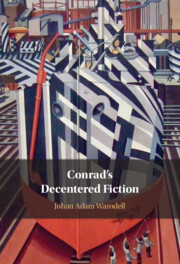Book contents
- Conrad’s Decentered Fiction
- Conrad’s Decentered Fiction
- Copyright page
- Dedication
- Epigraph
- Contents
- Figures
- Acknowledgments
- Abbreviations
- Introduction
- Part I Preprint Documents
- Part II Published Texts
- Part III Patterns and Preoccupations
- Chapter 7 Voices and The Nigger of the ‘Narcissus’
- Chapter 8 Hats, Nostromo, “The Secret Sharer” and The Secret Agent
- Chapter 9 Animals, Heart of Darkness and “The Planter of Malata”
- Conclusion
- Notes
- Bibliography
- Index
Chapter 9 - Animals, Heart of Darkness and “The Planter of Malata”
from Part III - Patterns and Preoccupations
Published online by Cambridge University Press: 10 March 2022
- Conrad’s Decentered Fiction
- Conrad’s Decentered Fiction
- Copyright page
- Dedication
- Epigraph
- Contents
- Figures
- Acknowledgments
- Abbreviations
- Introduction
- Part I Preprint Documents
- Part II Published Texts
- Part III Patterns and Preoccupations
- Chapter 7 Voices and The Nigger of the ‘Narcissus’
- Chapter 8 Hats, Nostromo, “The Secret Sharer” and The Secret Agent
- Chapter 9 Animals, Heart of Darkness and “The Planter of Malata”
- Conclusion
- Notes
- Bibliography
- Index
Summary
The Conradian fauna range from the albatross to the yearling and contain more than 150 different species of nonhuman animal. Despite the biodiversity, it is easy to overlook Conrad’s animals because they most frequently appear in metaphors and similes: at first sight, they lack agency, physical presence and independent meaning. But contrary to an articulated evaluative ideal of animal studies, Conrad’s animal metaphors invite reflection on human–animal relations, and demonstrate that an author can write attentively, sympathetically and thoughtfully on animals, despite primarily mentioning them in metaphors. The unreality effect, which I argue unites Conrad’s unconventional animal metaphors, confronts the reader to question the reality of the fictional construct. The unconventional sayings that produce this unreality effect all say: we have the appearance of a marginal, incidental detail but we are one of the most complicated structures in the text.
- Type
- Chapter
- Information
- Conrad's Decentered Fiction , pp. 166 - 181Publisher: Cambridge University PressPrint publication year: 2022

